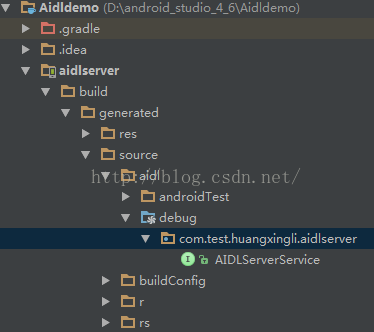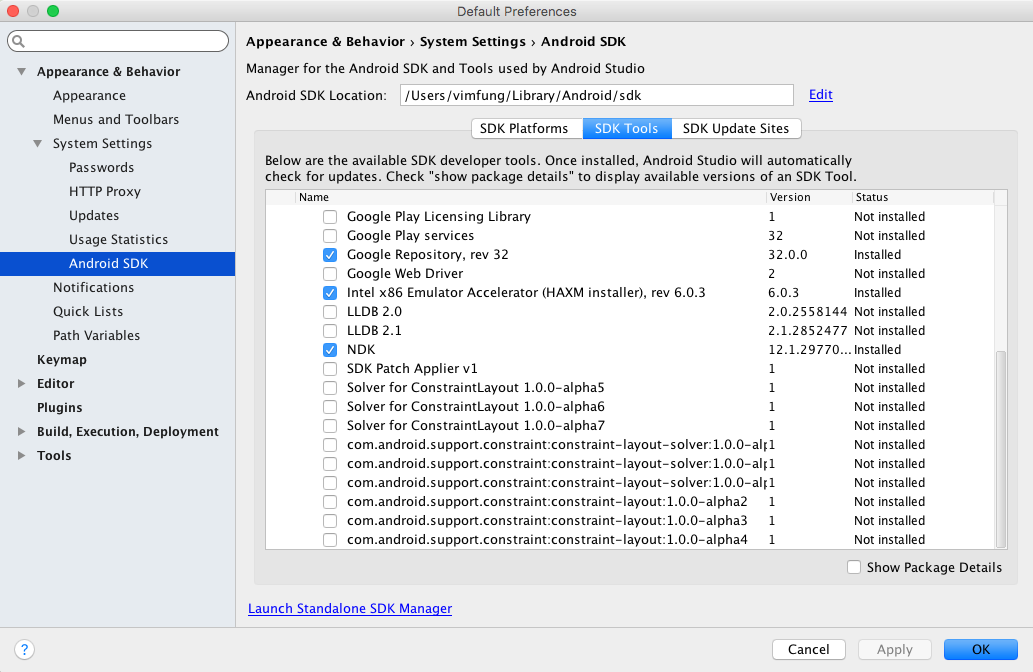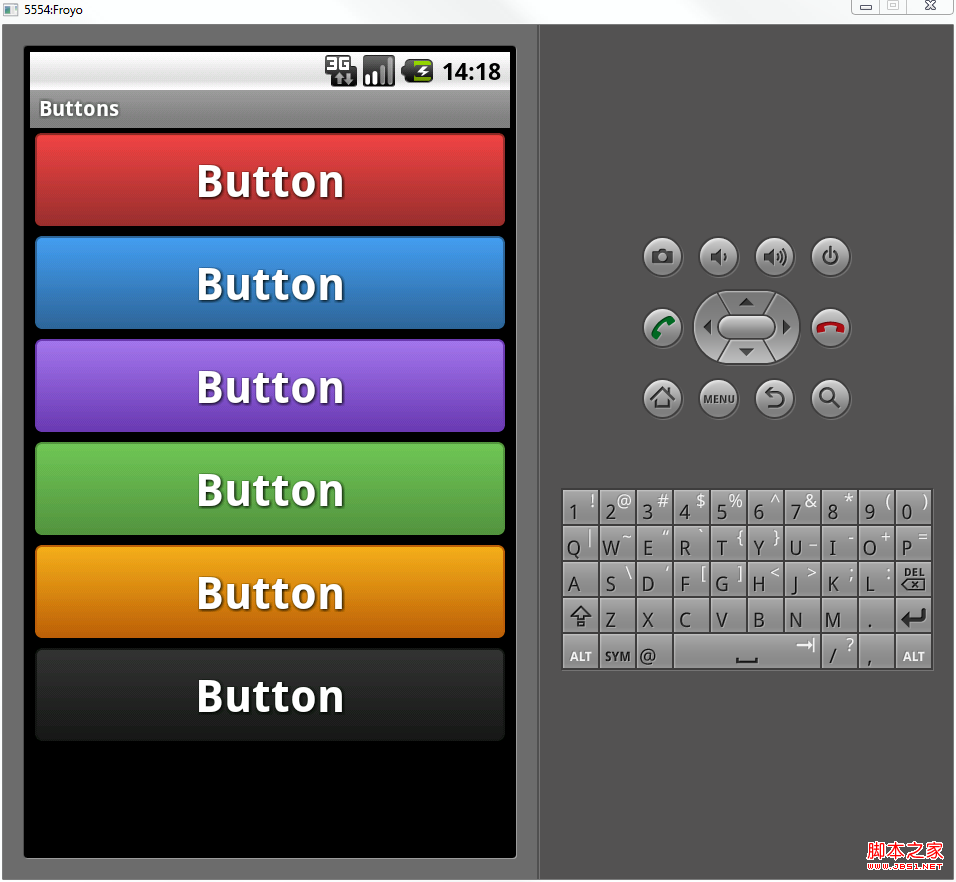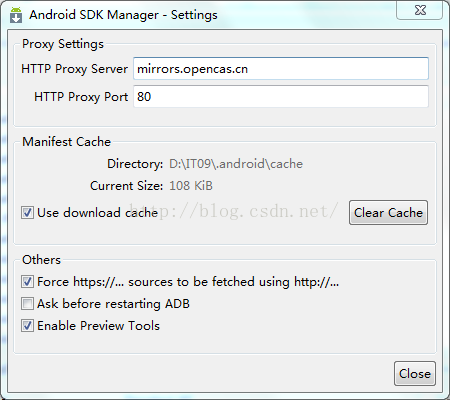Tabhost控件又稱分頁控件,在很多的開發語言中都存在。它可以擁有多個標簽頁,每個標簽頁可以擁有不同的內容。android中,一個標簽頁可以放 一個view或者一個activity。TabHost是標簽控件類的核心類,也是標簽的集合。
1.tabhost定義
android控件中有封裝好的tab控件,直接拖一個到xml文件中。下面的代碼都是tab控件自己生成的。
復制代碼
1 <RelativeLayout xmlns:android="http://schemas.android.com/apk/res/android"
2 xmlns:tools="http://schemas.android.com/tools"
3 android:layout_width="fill_parent"
4 android:layout_height="fill_parent"
5 android:paddingBottom="@dimen/activity_vertical_margin"
6 android:paddingLeft="@dimen/activity_horizontal_margin"
7 android:paddingRight="@dimen/activity_horizontal_margin"
8 android:paddingTop="@dimen/activity_vertical_margin"
9 tools:context=".MainActivity" >
10
11 <TabHost
12 android:id="@android:id/tabhost"
13 android:layout_width="fill_parent"
14 android:layout_height="fill_parent"
15 android:layout_alignParentLeft="true"
16 android:layout_alignParentTop="true" >
17
18 <LinearLayout
19 android:layout_width="match_parent"
20 android:layout_height="match_parent"
21 android:orientation="vertical" >
22
23 <TabWidget
24 android:id="@android:id/tabs"
25 android:layout_width="match_parent"
26 android:layout_height="wrap_content" >
27 </TabWidget>
28
29 <FrameLayout
30 android:id="@android:id/tabcontent"
31 android:layout_width="match_parent"
32 android:layout_height="match_parent" >
33
34 <LinearLayout
35 android:id="@+id/tab1"
36 android:layout_width="match_parent"
37 android:layout_height="match_parent"
38 android:orientation="vertical" >
39
40 </LinearLayout>
41
42 <LinearLayout
43 android:id="@+id/tab2"
44 android:layout_width="match_parent"
45 android:layout_height="match_parent"
46 android:orientation="vertical" >
47
48 </LinearLayout>
49
50 <LinearLayout
51 android:id="@+id/tab3"
52 android:layout_width="match_parent"
53 android:layout_height="match_parent"
54 android:orientation="vertical" >
55
56 </LinearLayout>
57 </FrameLayout>
58 </LinearLayout>
59 </TabHost>
60
61 </RelativeLayout>
復制代碼
在後台,可以通過tabhost.addtab方法添加分頁。本例添加了3個標簽,並且為其中的兩個綁定了不同的activity。
1 TabHost tabhost=this.getTabHost();
2 LayoutInflater.from(this).inflate(R.layout.activity_main,tabhost.getTabContentView(),true);
3 tabhost.addTab(tabhost.newTabSpec("tab1").setIndicator("撥號").setContent(new Intent(this,MyGallery.class)));
4 tabhost.addTab(tabhost.newTabSpec("tab2").setIndicator("記錄").setContent(new Intent(this,RatingListActivity.class)));
5 tabhost.addTab(tabhost.newTabSpec("tab3").setIndicator("聯系人").setContent(R.id.tab3));
2.MyGalleryxml
Gallery是相冊控件,它可以水平或者垂直浏覽多張圖片。imgageswitcher控件可以用來以動畫的方式切換圖片。本例將imageswitcher和gallery控件相結合。gallery存放多張圖片,而imageswitcher來顯示圖片。
首先來看xml文檔的定義。
xml文檔定義的很簡單,只是包含一個布局控件、一個gallery和imageswitcher。
復制代碼
1 Gallery gallery;
2 ImageSwitcher imgwch;
3 //設置圖片資源的id
4 private int[] imgIds={R.drawable.imgs1,R.drawable.imgs2,R.drawable.imgs3,R.drawable.imgs4,R.drawable.imgs5,R.drawable.imgs6,R.drawable.imgs7};
5 public void onCreate(Bundle savebundle)
6 {
7 super.onCreate(savebundle);
8 setContentView(R.layout.imgswitch);
9 imgwch=(ImageSwitcher)findViewById(R.id.imgswitcher1);
10 imgwch.setFactory(this);
11 //設置imageswitcher的圖片動畫顯示
12 imgwch.setInAnimation(AnimationUtils.loadAnimation(this, android.R.anim.fade_in));
13 imgwch.setOutAnimation(AnimationUtils.loadAnimation(this, android.R.anim.fade_out));
14 gallery=(Gallery)findViewById(R.id.gallery);
15 //定義相冊資源的適配器
16 ImageAdapter adapter=new ImageAdapter(this);
17 gallery.setAdapter(adapter);
18 gallery.setOnItemClickListener(new OnItemClickListener() {
19
20 @Override
21 public void onItemClick(AdapterView<?> arg0, View arg1, int arg2,
22 long arg3) {
23 // TODO Auto-generated method stub
24 //設置imageswitcher的資源id,這裡的數組下標示經過處理的,目的是為了能夠循環顯示圖像
25 imgwch.setBackgroundResource(imgIds[arg2%imgIds.length]);
26 }
27 });
28 }
29 //定義imageswitcher的顯示對象
30 public View makeView() {
31 ImageView imageView = new ImageView(this);
32 imageView.setBackgroundColor(Color.TRANSPARENT);
33 imageView.setScaleType(ImageView.ScaleType.FIT_CENTER);
34 imageView.setLayoutParams(new ImageSwitcher.LayoutParams(LayoutParams.FILL_PARENT,LayoutParams.FILL_PARENT));
35 return imageView;
36 }
37 public class ImageAdapter extends BaseAdapter
38 {
39 int mgallerybackground;
40 private Context context;
41 public ImageAdapter(Context context)
42 {
43 this.context=context;
44 //設置相冊圖像的顯示風格
45 TypedArray typed=obtainStyledAttributes(R.styleable.Gallery);
46 mgallerybackground=typed.getResourceId(R.styleable.Gallery_android_galleryItemBackground, 0);
47 typed.recycle();
48 }
49 @Override
50 public int getCount() {
51 // TODO Auto-generated method stub
52 //可以循環浏覽圖像
53 return Integer.MAX_VALUE;
54 }
55
56 @Override
57 public Object getItem(int position) {
58 // TODO Auto-generated method stub
59 return null;
60 }
61
62 @Override
63 public long getItemId(int position) {
64 // TODO Auto-generated method stub
65 return 0;
66 }
67
68 @Override
69 public View getView(int position, View convertView, ViewGroup parent) {
70 // TODO Auto-generated method stub
71 //設置圖像的顯示風格和顯示資源
72 ImageView img1=new ImageView(context);
73
74 img1.setScaleType(ImageView.ScaleType.FIT_XY);
75 img1.setLayoutParams(new Gallery.LayoutParams(136,88));
76 img1.setImageResource(imgIds[position%imgIds.length]);
77 img1.setBackgroundResource(mgallerybackground);
78 return img1;
79 }
復制代碼
這裡為相冊指定了資源,並設置了顯示的風格。也為imageswitcher設置了顯示的對象,以及動畫的淡入和淡出。
通過以上的代碼,我們可以單擊“撥號”,即可顯示gallery頁,同時,imageswitcher可以隨著gallery浏覽對象的變化而變化。
3.RatingList
本例是實現基於RatingBar和Listview的打分應用。
復制代碼
1 <?xml version="1.0" encoding="utf-8"?>
2 <LinearLayout xmlns:android="http://schemas.android.com/apk/res/android"
3 android:layout_width="fill_parent"
4 android:layout_height="fill_parent"
5 android:orientation="vertical" >
6
7 <ListView
8 android:id="@+id/lvrating"
9 android:layout_width="fill_parent"
10 android:layout_height="wrap_content" >
11
12 </ListView>
13 </LinearLayout>
復制代碼
這個xml文檔用來定義顯示的列表,有listview構成。下面需要定義listview的item項。
復制代碼
1 <?xml version="1.0" encoding="utf-8"?>
2 <LinearLayout xmlns:android="http://schemas.android.com/apk/res/android"
3 android:layout_width="fill_parent"
4 android:layout_height="wrap_content"
5 android:gravity="center_vertical"
6 android:orientation="horizontal" >
7
8 <ImageView
9 android:id="@+id/ivLogo"
10 android:layout_width="60dp"
11 android:layout_height="60dp"
12 android:paddingLeft="5dp"
13 android:src="@drawable/ic_launcher" />
14
15 <RelativeLayout
16 android:layout_width="wrap_content"
17 android:layout_height="wrap_content"
18 android:layout_gravity="right"
19 android:orientation="vertical"
20 android:padding="10dp" >
21
22 <TextView
23 android:id="@+id/tvApplicationName"
24 android:layout_width="wrap_content"
25 android:layout_height="wrap_content"
26 android:textSize="16dp" />
27
28 <TextView
29 android:id="@+id/tvAuthor"
30 android:layout_width="wrap_content"
31 android:layout_height="wrap_content"
32 android:layout_below="@id/tvApplicationName"
33 android:textSize="14dp" />
34
35 </RelativeLayout>
36
37 <RelativeLayout
38 android:layout_width="fill_parent"
39 android:layout_height="wrap_content"
40 android:gravity="right"
41 android:padding="10dp"
42 android:orientation="vertical" >
43
44 <TextView
45 android:id="@+id/tvRating"
46 android:layout_width="wrap_content"
47 android:layout_height="wrap_content"
48 android:text="5.0" />
49
50 <RatingBar
51 android:id="@+id/ratingbar"
52 style="?android:attr/ratingBarStyleSmall"
53 android:layout_width="wrap_content"
54 android:layout_height="wrap_content"
55 android:layout_below="@id/tvRating"
56 android:numStars="5" />
57
58 </RelativeLayout>
59 </LinearLayout>
復制代碼
對於listview的使用方法,大家都應該很清楚的。一般定義復雜的列表顯示,都需要通過listview以及item組成。在後台可以通過simpleadapter或者baseadapter來綁定數據。
復制代碼
1 public void onCreate(Bundle savedbundle)
2 {
3 super.onCreate(savedbundle);
4 setContentView(R.layout.listv);
5 ListView listview=(ListView)findViewById(R.id.lvrating);
6 final MyBaseadapter adapter=new MyBaseadapter(this);
7
8 listview.setAdapter(adapter);
9 listview.setOnItemClickListener(new OnItemClickListener() {
10
11 @Override
12 public void onItemClick(AdapterView<?> arg0, View arg1, final int arg2,
13 long arg3) {
14 // TODO Auto-generated method stub
15 View myView=getLayoutInflater().inflate(R.layout.rating, null);
16 final RatingBar ratingbar=(RatingBar)myView.findViewById(R.id.ratingBar1);
17 ratingbar.setRating(applicationrating[arg2]);
18 new AlertDialog.Builder(RatingListActivity.this).setTitle(applicationNames[arg2]).setMessage("給城市打分").setView(myView)
19 .setPositiveButton("確定", new OnClickListener() {
20
21 @Override
22 public void onClick(DialogInterface dialog, int which) {
23 // TODO Auto-generated method stub
24 adapter.setRating(arg2, ratingbar.getRating());
25 }
26 }).setNegativeButton("取消", null).show();
27 }
28 });
29 }
復制代碼
在oncreate方法中為listview綁定數據,並設置listview的監聽事件。MyBaseadapter類繼承BaseAdapter類。
復制代碼
1 public class MyBaseadapter extends BaseAdapter
2 {
3
4 private Context context;
5 public MyBaseadapter(Context context)
6 {
7 this.context=context;
8 }
9 @Override
10 public int getCount() {
11 // TODO Auto-generated method stub
12 return resIds.length;
13 }
14
15 @Override
16 public Object getItem(int position) {
17 // TODO Auto-generated method stub
18 return null;
19 }
20
21 @Override
22 public long getItemId(int position) {
23 // TODO Auto-generated method stub
24 return 0;
25 }
26
27 @Override
28 public View getView(int position, View convertView, ViewGroup parent) {
29 // TODO Auto-generated method stub
30 TextView tvapplicationname;
31 if(convertView==null)
32 {
33 //對於這裡的使用,真的有太多的方法,這裡是為了要或者我們定義的那個item.xml。
34 convertView=LayoutInflater.from(context).inflate(R.layout.ratinglist, null);
35 }
36 tvapplicationname=(TextView)convertView.findViewById(R.id.tvApplicationName);
37 tvapplicationname.setText(applicationNames[position]);
38 ImageView ivlogo=(ImageView)convertView.findViewById(R.id.ivLogo);
39 ivlogo.setImageResource(resIds[position]);
40 TextView tvauthor=(TextView)convertView.findViewById(R.id.tvAuthor);
41 tvauthor.setText(authors[position]);
42 TextView tvrating=(TextView)convertView.findViewById(R.id.tvRating);
43 tvrating.setText(String.valueOf(applicationrating[position]));
44 RatingBar ratingbar=(RatingBar)convertView.findViewById(R.id.ratingbar);
45 ratingbar.setRating(applicationrating[position]);
46 return convertView;
47 }
48 public void setRating(int position,float rating)
49 {
50 applicationrating[position]=rating;
51 notifyDataSetChanged();
52 }
53
54 }
復制代碼
BaseAdapter中getView方法使用容易出錯,經常會出現獲取不到xml文檔的情況,主要是Layoutinflater.inflate的使用。這裡在獲取view對象後,然後為view中的每個控件賦值。最後將這個view返回。這裡返回的是listview的每一個item。
 Android studio 中創建AIDL Service
Android studio 中創建AIDL Service
 使用Android Studio進行JNI開發 - Mac篇
使用Android Studio進行JNI開發 - Mac篇
 Android自定義格式顯示Button的布局思路
Android自定義格式顯示Button的布局思路
 DELPHI XE Android 開發筆記
DELPHI XE Android 開發筆記